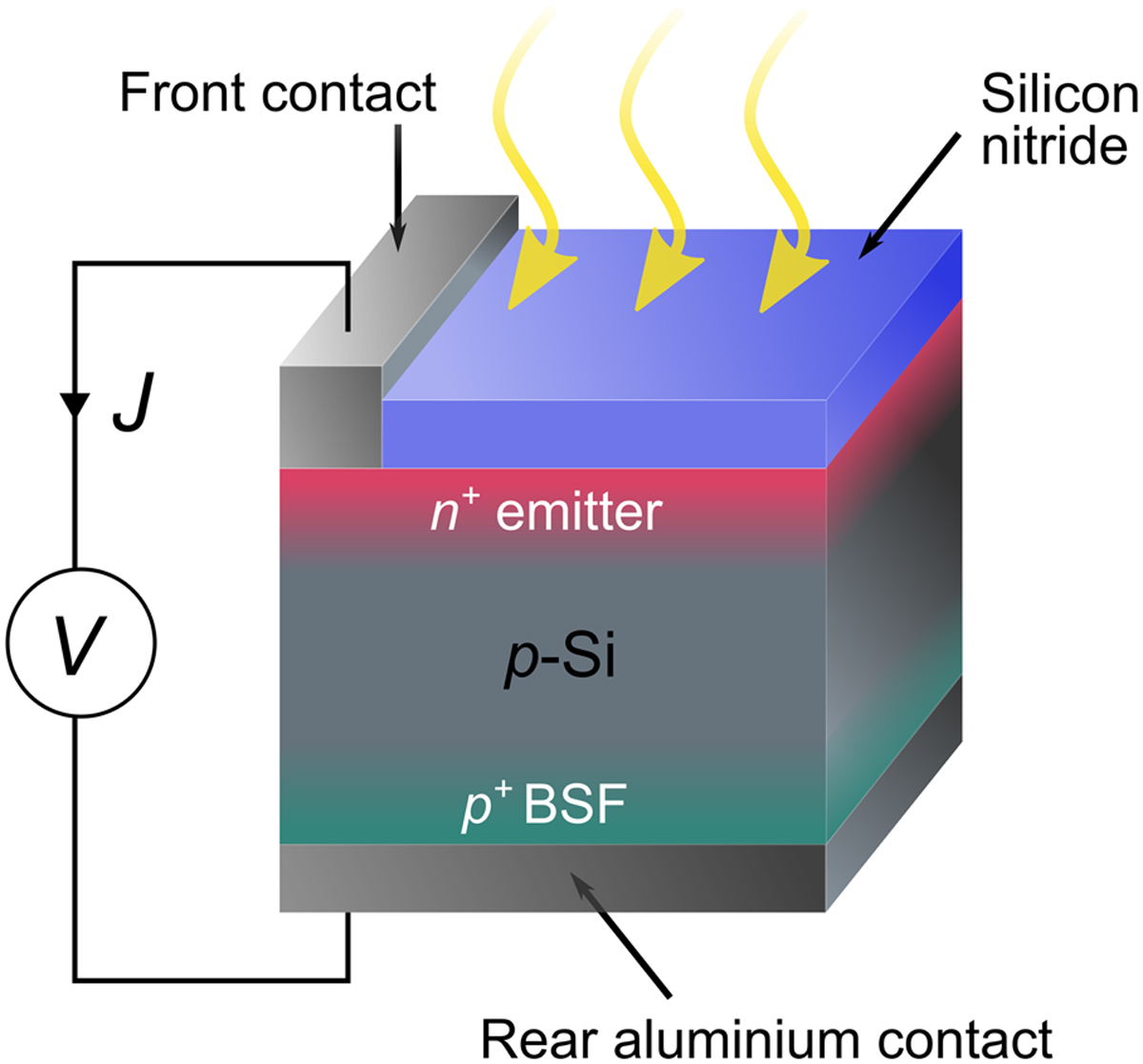Researchers from France's Institut des Nanotechnologies de Lyon (INL) have developed a fully coupled opto-electro-thermal model to predict the output and temperature of crystalline solar cells.
“We showed the potential of our model to study the influence of the cell design on its real operating performance, thus giving a new opportunity for silicon solar cell optimization,” researcher Jérémy Dumoulin told pv magazine. “For instance, the doping level is found to impact both the operating temperature and the temperature coefficient, showing that two cells with the same efficiency in standard test conditions can have a very different efficiency under real operating conditions.”
The scientists used Comsol Multiphysics software, which purportedly solves the complete Maxwell equations, as well as the carrier transport equations, while also offering a detailed thermal model including all the main self-heating processes occurring in a solar cell.
“Detailed input sets are used for all physical modules, such as a temperature-dependent complex refractive index of c-Si which is found to be crucial for accurate simulation results,” they said. “Radiative and convective cooling are also implemented.”
The research team compared different coupling scenarios on a benchmark crystallin silicon cell.
“These two steps are repeated until the absolute temperature difference between two iterations is smaller than a target value (0.05 ∘C in this work),” the group said. “In the first iteration, a constant temperature distribution is used for the optical calculation.”
Popular content
The model showed that two solar cells with the same power conversion efficiency rate under standard illumination conditions can achieve different efficiencies under real operating conditions, depending on the doping level of the cells.
“The underlying reason was found to be twofold: (1) Different cell temperatures due to different thermal emissivities; (2) Different temperature coefficients attributed to the increase in open-circuit voltage with the doping level,” the scientists said. “Secondly, our study shed light on the dependence of the temperature coefficient on the solar spectrum.”
They presented the new model in “A fully coupled opto-electro-thermal model to investigate silicon solar cells under real operating conditions,” which was recently published in EPJ Photovoltaics.
“This work opens the way to more reliable outdoor prediction,” Dumoulin said.
In another report published last year, the same research group proposed the use pf radiative sky cooling (RSC) at the research level as a potential passive cooling technique for buildings and solar modules. The group claimed the method could improve performance by more than 5 W per square meter.
This content is protected by copyright and may not be reused. If you want to cooperate with us and would like to reuse some of our content, please contact: editors@pv-magazine.com.



By submitting this form you agree to pv magazine using your data for the purposes of publishing your comment.
Your personal data will only be disclosed or otherwise transmitted to third parties for the purposes of spam filtering or if this is necessary for technical maintenance of the website. Any other transfer to third parties will not take place unless this is justified on the basis of applicable data protection regulations or if pv magazine is legally obliged to do so.
You may revoke this consent at any time with effect for the future, in which case your personal data will be deleted immediately. Otherwise, your data will be deleted if pv magazine has processed your request or the purpose of data storage is fulfilled.
Further information on data privacy can be found in our Data Protection Policy.